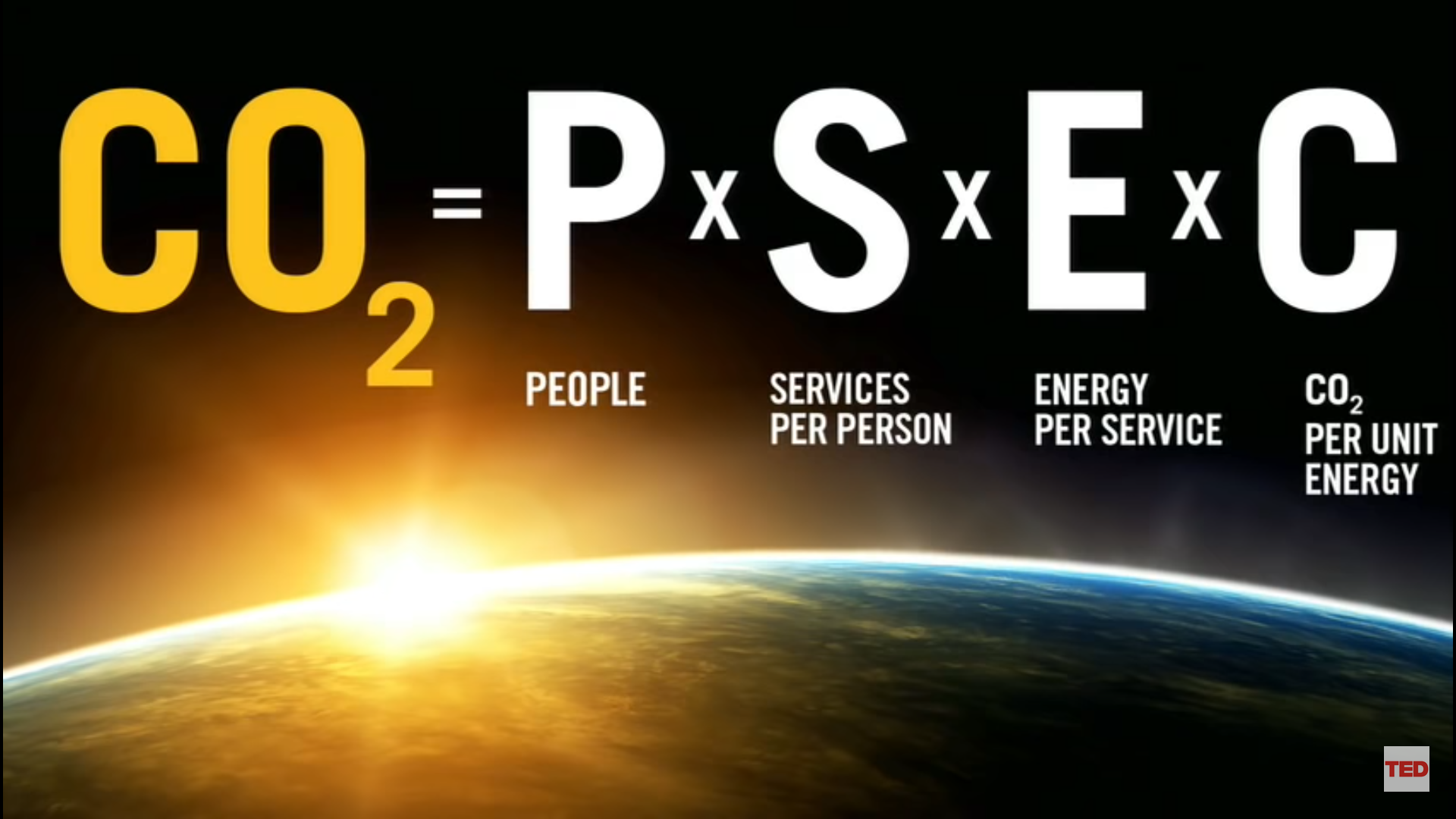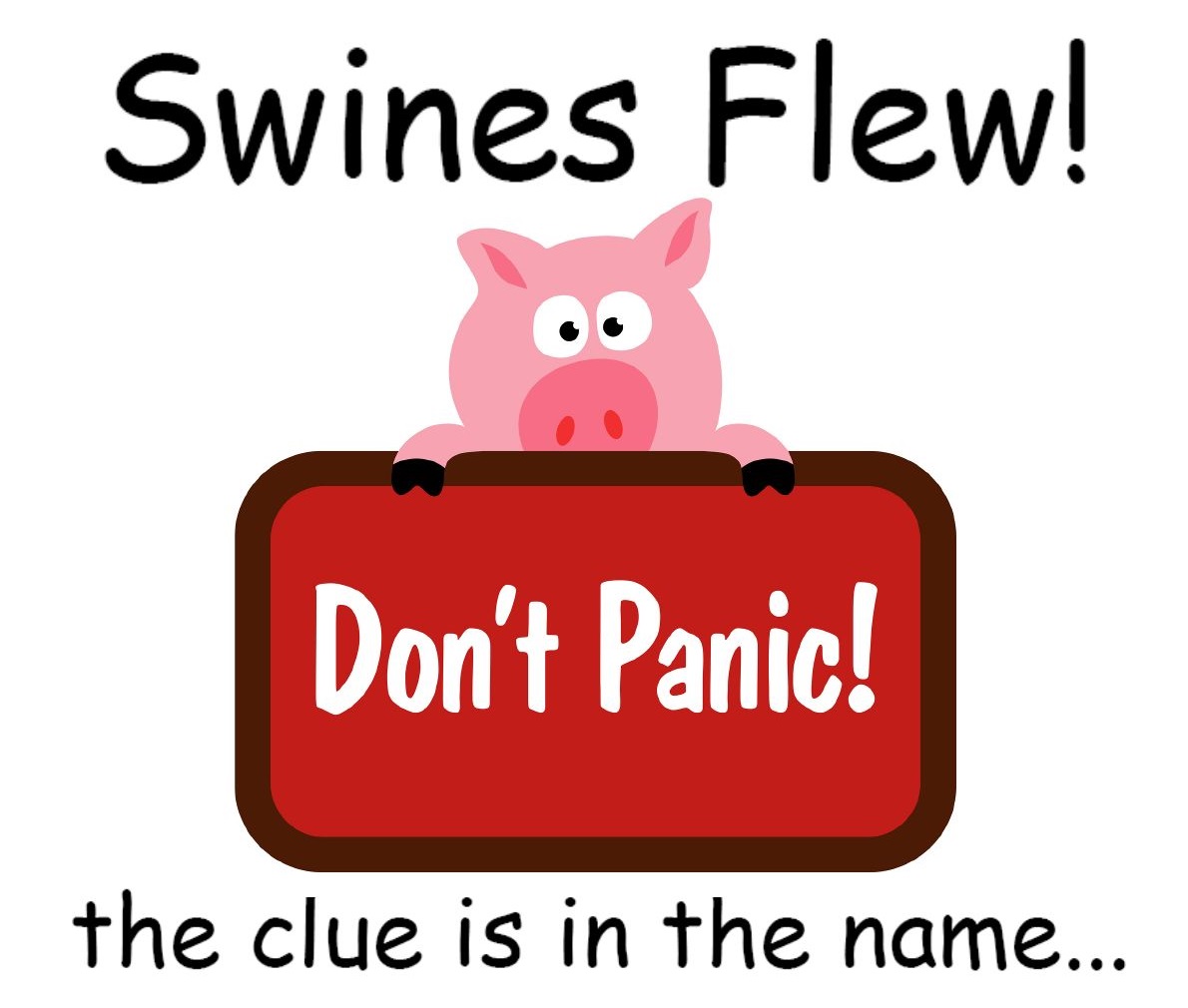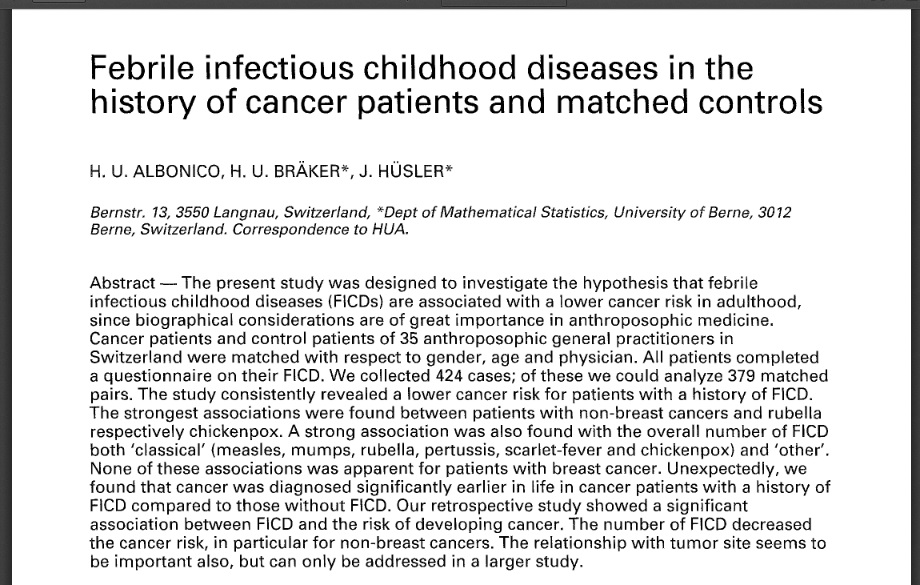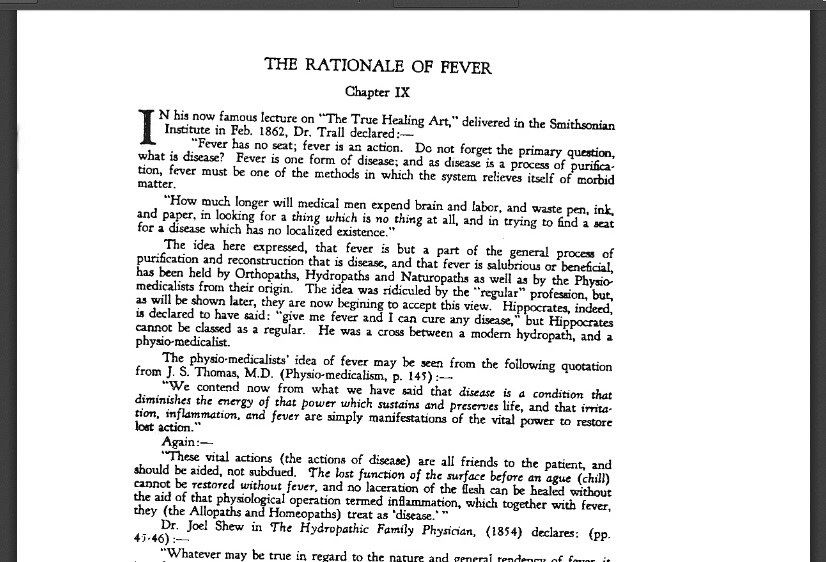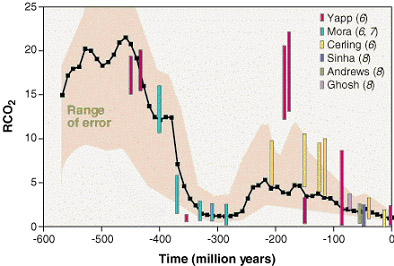Vaccination: an idea so good we can’t talk about it
Background: there are huge numbers of very credible witnesses to a whole raft of problems with vaccines. And if as much official effort were spent checking out their testimony as keeping them out of the witness box, we might have a much healthier society.
Somewhere in my collection is a book called ‘Vaccination and Immunisation: Dangers, Delusions and Alternatives (What Every Parent Should Know)’, written by the prolific health writer Leon Chaitow at a time when there was open discussion about the pros and cons of vaccination. I recall this as healthy and respectful conversation, that recognised that the values and autonomy of the individual are central to good medical practice. It was also a time when most people seemed to understand that pharmaceuticals all have limited benefits and certain risks, and knew how to take care of themselves. Freedom of discussion can only help people to make the best healthcare decisions for themselves and their families. That is why choice and informed consent are core principles of medical practice that every good doctor upholds and defends; at least they were.
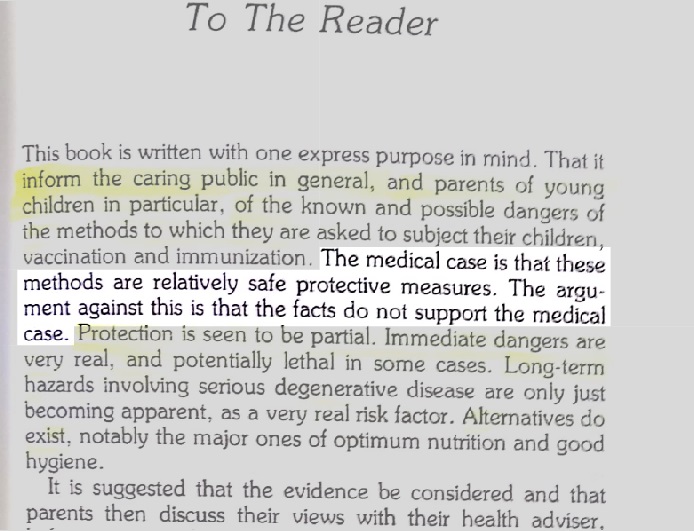
From Chaitow’s book
Around the time of Chaitow’s book, my life’s journey brought me into contact with healers of all kinds. A few years later and with one science degree already under my belt, my faith in medicine was completely dashed by personal experience. I needed solutions to problems in my own circle, that had defeated the best medical brains in their fields. And that led me to study health sciences.
Natural immunity is the only real immunity, and health is the only reliable solution to disease. But nobody is forcing anybody else to believe it.
To me it now seems like hocus-pocus to poison people in pursuit of health, and vaccination has come to signify junk immunity. Like junk food it may have a certain value, but it is not the real thing, and if relied upon too heavily it causes more harm that good.
As a student it was quite normal to explore and debate these issues, and examine them from every angle. In fact, it was encouraged. It became quite clear that, no matter what form of healing we choose, we cannot afford to ignore vaccinations, as they present important and occasionally catastrophic influences on the immune system and inflammatory functions, and in turn, can affect every system of the body. To fulfill our duty of care as practitioners we must be aware of all sources of potential harm to the patient. And anyone who thinks that medical products can never do harm is simply ignorant.
As therapists we might occasionally spot vaccine reactions masquerading as some kind of injury. We would often be asked our views on vaccinations by patients, wanting a balance of opinion and not just the standard advice, wanting to make the best decisions for themselves. And although they may still chose to vaccinate, they were typically grateful to know there was another side.
So it was no big deal to see Chaitow’s book sitting alongside books by homoeopaths, herbalists, chiropractors, nutritionists, psychologists, yogis, doctors etc, in the health sections of bookshops and libraries, therapists’ waiting rooms and even doctors’ offices. A generation later, such literature is called ‘anti-vaccination’ and is not so easy to see.
The pejorative term ‘anti-vaccination’ now catches almost any level of doubt, concern or discussion.
It has swept up parents who willingly got their children vaccinated, and who were then left high and dry after devastating adverse reactions. It has come to include doctors who help their patients exercise free informed choice. It includes scientists who document the fate of injected substances in the body. It includes lawyers who believe in the rights of people not to be harmed, deceived or pushed around, and politicians who believe that mandating medical treatment is not acceptable in a democracy.
The only people who can never be accused of anti-vaccination are those holding the extreme position that all vaccines are completely safe and completely beneficial, and should be mandated without exceptions to safeguard the human race from decimation by diseases that are only a sneeze away.
Any wavering on any element of this belief structure can now potentially be labelled as anti-vaccine. And because anti-vaccination has been dishonestly conflated with anti-science, a more nuanced view of scientific reality cannot be used to defend such positions.
In other words, because you question vaccines you are anti-science, and because you are anti-science your concerns about vaccines are invalid. So-called ‘science’ has become twisted into a matter of choosing sides.
The times they are a changin’…
Something has happened in the last twenty years. Such extremism does not get a foothold by accident. The reason many practitioners and doctors have dropped out of these discussions is not that the concerns have all been laid to rest, because they haven’t. Most avoid ‘going there’ to avoid the mark of the antivaxxer, and the risks to career that go with that. In this unhealthy climate of fear and denial doctors and other healers are self-censoring lest they get burned at the stake.
Suppression of dissent – an Emperor’s New Clothes situation.
When the King shows it all before the crowd, those nearest – the wise, the wealthy, and the well-connected – hold their tongues the longest. To believe what they are seeing is to admit to their own foolishness, and worse, to feel the King’s wrath. So they convince themselves it is they who have made a mistake.
The heckling begins not with the experts, but with the naughty children, so the Emperor and his supporters dismiss them fairly easily. And the longer this goes on, the more the laughter spreads through the crowd, the ones most loyal to the King fear his growing anger and their own exposure. The last ones to speak up will surely look the most ridiculous, so they hang on the most tightly to the official line.
Same paper, two headlines, ten years apart. Then:
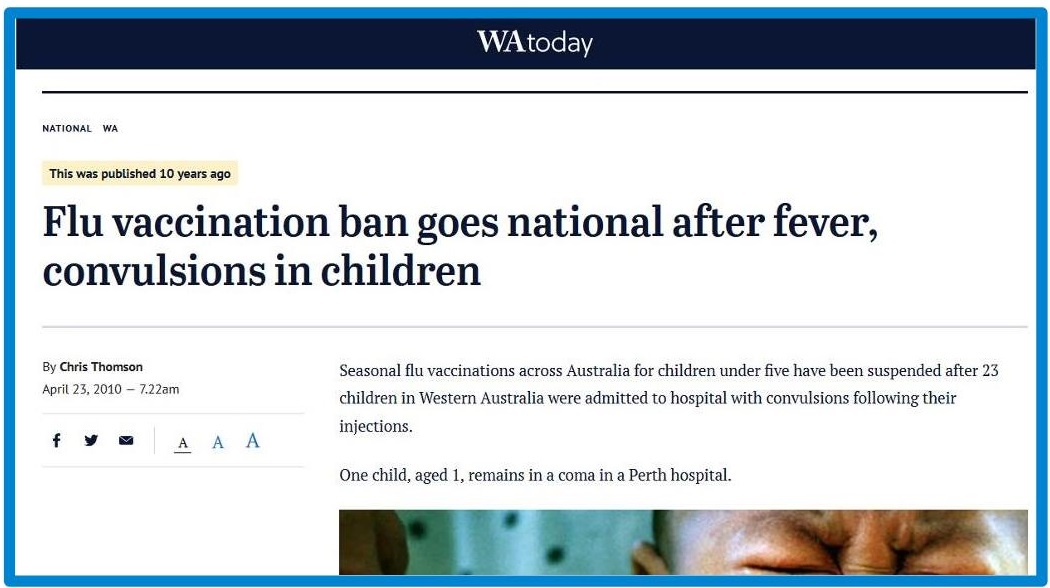
WA Today, April 2010
…and now:
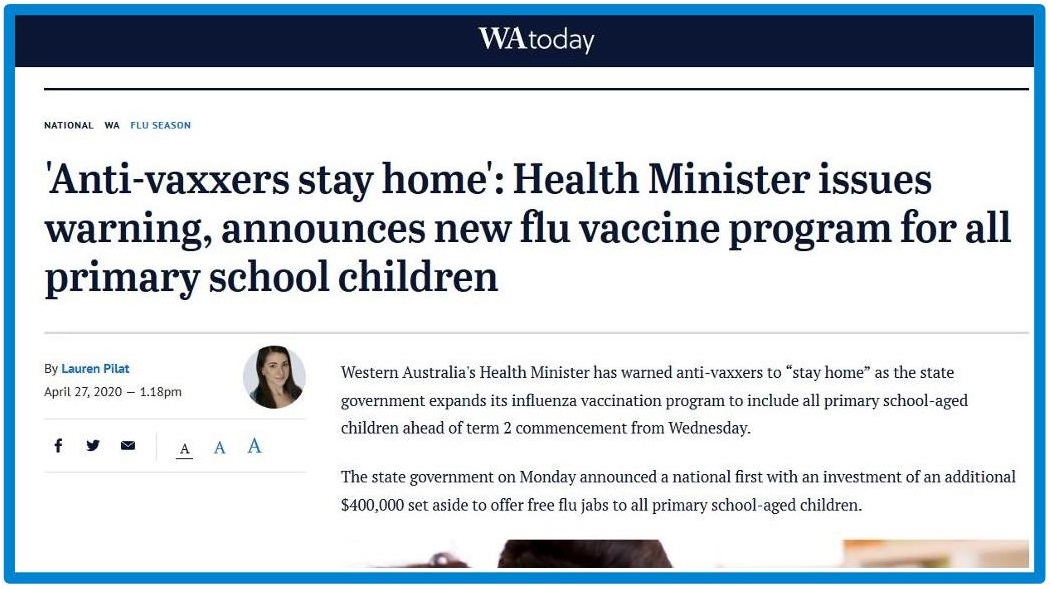
Same paper, April 2020 – exactly ten years later
When public health policy is so at odds with medical science, why should the public have any confidence?
Whatever their position on this, those working in healthcare are only too aware of the growing clamour from the crowd and the reddening face of the King. Many simply go along to get along, but there are those who are uncomfortable living a lie, and some may simply quit. Doctors are unable to speak freely to their patients, as increasingly non-doctors are deciding for them what they can and can’t talk about.
In the UK we are lucky that we still have freedom of speech, sort of. The autonomy of the patient and informed consent are taken much more seriously than in some societies. But there are moves to criminalise expression of antivaccination views. And so the pressure is increasing. The catch-all phrase that has crept into professional codes; ‘must support public health’, can be used to admonish those who don’t parrot standard information, and it may not be long before some precedents are set.
Dissent is now actively suppressed in medicine: let’s be absolutely clear about this.
Elsewhere in the world, freedom to choose and freedom to discuss this are long gone. In Australia, doctors have already lost licences and careers, for expressing doubts about one-size-fits-all medicine, for offering individualised care, and for supporting their patients’ rights to choose; performing their duty, in other words. Clinical knowledge and informed consent are under siege. Good doctors working first and foremost for their patients can find themselves in a lot of trouble.
The public everywhere are being subjected to powerful social controls, and the bulk of the population simply sleepwalk through vaccination decisions, unaware of the questions they should be asking. For those who believe being responsible means reading, thinking, asking, and then deciding what is best for their own children, life is being made increasingly difficult. Ironically, they are accused of being irresponsible for making actual decisions.
There is the psychological pressure: fear of deadly plagues ravaging the world is now being used to overcome peoples critical faculties and divide them from their neighbours. How many times have we heard the cry of wolf? Ebola! SARS! Bird Flu! Swine Flu!
And of course, the current pandemic.
Well, when there is a crisis of such proportions, the last thing anybody should be allowed to do is think! Far better that we accept without question the one-dimensional view of the problem in the media, and the knee-jerk reactions of governments. One might think so.
But, if you really think that the sky is falling right now because of a new virus, remember that a year ago the sky was falling because of measles. Measles! There is a lot more to this situation than meets the eye, and a lot to be genuinely concerned about, of course. But for me, the least of the worries is a virus (more on the pandemic later).
And your daughter will die of cancer unless you give her this shot. And now so will your son. But if you dare mention the truth that this shot sees ten percent of girls in hospital within six weeks, you are a fear-mongering anti-vaxxer, putting innocent people at risk, damaging public health. Does such pernicious emotional blackmail really bolster confidence in public health? I think not.
In recent years Europe has been blindsided by sudden mandates, which is one very good reason for Brexit, while in Australia and the USA the approach towards parents is one of insidious manipulation. The claim that nobody is being forced seems hollow if childcare and welfare payments are removed in punishment for not ‘voluntarily’ vaccinating your children, and if politicians apply intentionally divisive labels. As long as you don’t mind financial hardship and social isolation, and as long as you don’t fear being placed on a ‘list’ next time you take your kids to a hospital for a cut on the knee, you are free to bring up your germy little ‘superspreaders’ exactly as you think best, Anti-vaxxer!
Doctors are still giving advice for the good of their patients; as long as everyone understands that what is good for them is decreed by the politicians and lawyers who write the medical advice.
And if you say “thanks but no thanks”, then there will always be somebody else unspecified, for whom it is even more important that you accept medical treatment you don’t need. Somewhere on the planet is no doubt some person – frail, immunocompromised, or something – to whom you are a danger if you don’t get your shots. Their rights are more important than yours, bad citizen! This is the logic of tyrants and psychopaths; since if everybody is less important than somebody else, then nobody actually matters and nobody has any rights.
To deny access to public resources, and even private resources, to make people social pariahs in their own communities, is not the product of reason, it is the design of fanatics. It goes against one of the central principles of medical ethics; informed consent, whereby no form of coercion or manipulation is acceptable.
Right now, all over the world, the ‘other person’s rights’ argument is being used to take away everybody’s rights, including all those ‘other people’.
There are people in care homes – who may have fought wars to protect our rights to self-determination – being forbidden to see their own families and terrified into helplessness. Any argument that this is all for their own good just adds to the nastiness.
“Only a fool cannot see the clothes”.
The irony of using poverty and social division as tools in public health is huge. It seems to be lost on all those public servants dreaming up such schemes, with the excuse that they have the support of experts. But, guess what: experts don’t make the law. They advise. And experts who disagree with policy often don’t get hired as government advisors. So it’s hard to imagine government getting a balance of expert opinion in Australia, say, where ministers have vowed publicly to punish ‘anti-vax doctors’ without mercy.
And under these toxic conditions both the regulated and unregulated professions are choosing to hide behind a veil of rules while they wait for something to change.
But who are the ‘experts’, the select few who may discuss royal high fashion?
This aspect alone would fill a book, but it’s fair to say the science that underpins all of this is now bent beyond belief, and has been for years. Many experts advising government on vaccines and other pharmaceuticals have major conflicts of interest. Alternatively, government advisors may have been chosen because their expertise is the kind that is wanted. The USA has a phenomenon known as ‘agency capture’, meaning the institutions that are supposed to protect the public are in fact working for the very organisations from which the public need protecting.
“It doesn’t take a weatherman to know which way the wind blows…”
When science is a matter of taking sides, those who disagree are not experts. So, surprise surprise, all the experts agree. And hence the illusion of policy underpinned by scientific consensus is created. But it isn’t consensus, it is intolerance of individual opinion and dissent.
When the sartorial insufficiency of the king can no longer be denied, then no doubt some tailors’ heads will roll. We seem to be reaching the point when the King’s red face may explode into rage at any second. “Silence! You are all fools!”. And who would dare say otherwise within the court?
So far I have said little about the vaccines themselves, but keep reading.
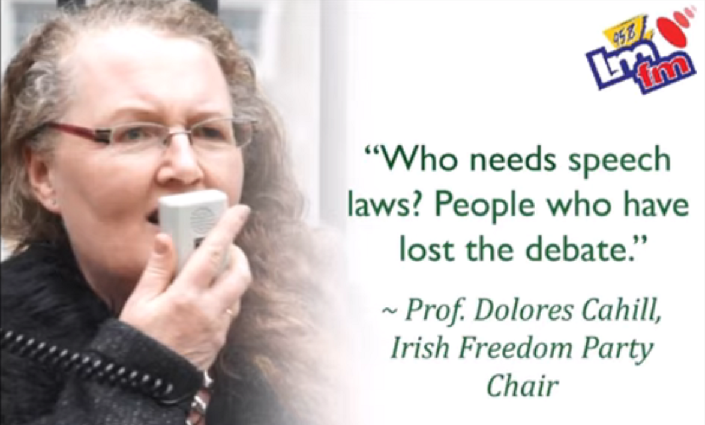
There is something deeply wrong with a public health programme that cannot be allowed to stand on its merits. Don’t solve this by telling yourself the experts are smarter than you so you should just go along. They are not necessarily smarter, they have spent careers making all the right noises, that is all. Many are fielding on public policy while batting for the corporations. It isn’t hard to imagine that an industry worth hundreds of billions would want to get its people involved in government decisions.
But it goes much, much further than that. We now have the extraordinary phenomenon of Bill Gates – fanatical about vaccines, no medical training, phenomenal wealth – who has bought unprecedented influence, and a controlling hand in much of worldwide government policy, the media, science, the arts, and of course the internet.
Gates has been pushing a very aggressive vaccine agenda for a decade now, and for him, a lot is riding on its success [success here = return on investment]. He desperately needs to control the vaccine narrative and the organisations that promulgate it, because from a public health point of view, his programme has been far from a success. It has in fact been an absolute disaster. It has harmed hundreds of thousands, possibly millions, of people in the developing world, raised legal action over ethics violations, and got his foundation kicked out of India. Despite this monumental failure, he has become more determined than ever to fulfill this ambition, and he has acquired the means to follow through. His empire now threatens the future of whole nation states. How he has acquired such power without any discernible challenge is almost a mystery. He has no democratic mandate whatsoever for his influence, and I really hope our leaders are awake.
From Meet Bill Gates – The Corbett Report Episode 380
What if you are new to this conversation? How do you get informed?
An hour on the internet won’t make you an expert, but it will demonstrate beyond doubt that there is much more to vaccines than ‘safe-effective-necessary, no downside, everyone should do it, shut up if you disagree’.
That said, the internet is being very actively filtered for so-called ‘misinformation’, so one must be more thoughtful now to find the same information as even a year ago. But one glimpse of the Emperor’s bare behind is enough to know that all is not as we have been told.
And when your senses tell you there is something seriously wrong with the picture, that confusion, propaganda, censorship and misinfomation are everywhere, and the effect could be life-altering, what is the logical thing to do?
If your natural reaction is to trust the government and its experts, then you have just failed the most basic citizenship test.
In case you hadn’t noticed, governments get things wrong all the time, especially in matters of health. Sun avoidance, low fat diets and DDT are cases in point.
If you are still unsure, then the correct action is to keep checking a wide range of sources until you are clear.
Many years ago I began to do that, and after a few years I had collected many files, videos, informed articles and books, and a huge number of scientific papers. And I quickly realised the hard part is not finding the information but actually processing it, because there is so much of it.
It takes a lot of care and dedication to understand even a very small part of the science. A lot of inconvenient truth is hidden in plain sight, or completely obscured by impenetrable details. Interpretations of data can vary, authors do not always explain their reasoning. Assumptions abound, as do data-massaging, conflicts of interest and outright trickery. Vast swathes of science remain behind paywalls. Sometimes the problems need to be explained before they can be understood.
Unless a paper makes it clear that, say, the ‘placebo’ in a trial is not actually an inert substance, but a highly inflammatory chemical cocktail, or that the ‘unvaccinated group’ in a study had actually been vaccinated, but with fewer vaccines, it may be impossible to know what it really proves. Misdirection and defensive writing are both common, where a paper gives less prominence to a devastating finding than to unsupported declarations that vaccines have saved millions of lives.
For me the picture that emerged is this:
However simple and clear the decision to vaccinate is supposed to be, the science can no way be said to underpin such confidence. There are huge numbers of very credible witnesses to a whole raft of problems with vaccines. And if as much official effort were spent checking out their testimony as keeping them out of the witness box, we might have better science, better policy, and perhaps a much healthier society.
This much can be demonstrated in a very short time, no high expertise required. But it is probably not good enough for those giving specific medical advice.
When it comes to public health, professionals are supposed to work inside of what is called the ‘Best Available Evidence’, medicine’s glass house. Whole libraries could be written on what that phrase actually means. And I will sum it up by saying;
Which evidence is the ‘best’ evidence depends on the question being asked, who is asking, and the purpose for which the answers will be used. There is no one ‘best evidence’. To say that the best available evidence leads to one universal course of action for everybody at all times, is bogus.
For example, if you are asking whether a vaccine stimulates antibodies, that will take one kind of evidence. And if you are asking whether that means you should have it, that takes another kind of evidence, and must take into account who you are, your medical history, your social situation, your hopes, dreams, fears etc. There is no evidence anywhere that can say that a particular vaccine will save your life or hurt you. Therefore, ones own attitude to risk must also come into this.
And if you want to know whether people should have a choice, then that is a value-laden, ethical and philosophical question and hardly a matter of scientific evidence at all. However, ethics, values and transparency are what preserve a society’s trust in science, far more than the impressive findings science occasionally delivers.
In even the most scientific of matters, trust in a nation’s leadership and institutions cannot be maintained by disregarding the personal values of individuals. We cannot and must not leave the patient out of clinical decisions.
Therefore, whether to vaccinate or not, is a deeply personal decision that can only be taken properly by individual patients (and their advocates), in complete privacy, in conjunction with their chosen healthcare providers, without any form of pressure. It must take into account not just their medical history, but also their environment, their own world view, and their value system. The patient has the final call, since they are the one who must live with the results.
This is a far cry from the aggressive marketing of flu jabs based on threats, half-truths and selective provision of information. “Protect yourself and others, have the shot! Or else lose your job”. Where is the full picture and free choice that the individual deserves?
I suspect the number of clinicians with doubts about the official view – from mild uncertainty to outright opposition – is much larger than officially thought. Doctors are educated and reasonable people: many will have probed the issues privately, and been unsettled by what they have learned.
Concerned citizens are legion. And as fast as awareness is spreading, the silence at dinner parties is growing. The books have been taken out of the waiting rooms. My list of internet pages ‘not found’ grows and grows. That is why I also have a growing library of screenshots. Search-engine filtering is getting more and more aggressive. Wikipedia and Google are heavily distorted now. The media war on ‘misinformation’ is being applied not on the basis of verifiable truth, but on the basis of what is deemed politically acceptable. And on social media, shadow-banning and outright censorship are quite routine now. Somebody somewhere wants this conversation stopped.
At some point, when it is clear that the crowd is right, the Emperor has no clothes, that he can no longer demand silence, that there are too many doubts to sustain their prior beliefs, practitioners will come out of the closet in droves.
Once doctors’ own credibility is at stake, they will say “I’ve been saying it all along!”.
So can I make a watertight case that all vaccines are bad? Not exactly. And that isn’t really my position. Then why be against vaccination?
Well, I am not against it. You can do what you like with your body as far as I am concerned. And if you want to be a guinea pig for a fast-tracked coronavirus shot, be my guest, but you won’t find me at the front of the line! Having personally suffered a nasty reaction to a vaccine, I can’t pretend to anyone that the risks don’t matter. But that doesn’t mean I want to stop people doing what they think is best for them. What I am for is open discussion, ceaseless enquiry, and for personal informed choice. Vaccines concern me, and they certainly complicate my work as a therapist. But the hard-line on vaccines is what terrifies me. If anything were to make me become anti-vaccine it would be draconian laws, mandates and deception. So, it’s getting close.
There is considerable evidence that the authorities in various places have for decades been hiding vaccine damage to protect vaccination programmes. It’s a fact that the pharmaceutical industry has. Confidence in public health is being damaged beyond belief. It is this ambition to foist as many vaccinations as possible on the public, whilst covering up the problems, that will likely bring the whole vaccination programme crashing down, not mums and dads asking questions.
The ‘something must be done’ argument.
People’s thinking can contain some bizarre disconnects, like (recently heard): “I don’t believe in vaccines, but I don’t want to catch the flu”. Do they work this out for themselves, or has the thought somehow been planted?
And urgently vaccinating everybody seems to matter so much these days that nobody is checking the effects. You can see it in the way politicians talk about aggressive public health initiatives. They say “look, it is working, uptake has increased”.
In other words, sales are up! Woopdy-doo!
It is gross failure of reason, that believes doing something is so important, that we must not stop to think about effect of doing it. This is the logic of the person who jumps from the 10th floor of a burning tower block.
The golden rule in public heath is: don’t spread fear and panic. So who is being irresponsible; those people saying “hold on a minute, have you seen what is happening to all those people jumping from the windows”, or the ones shouting “fire”?
What is not being checked is the outcome that actually matters; the effect on the health of the population.
Well I can tell you the health of our children is a disaster. When I was at school, nobody I knew had an inhaler. Epipens didn’t exist. If you mentioned autism, people would say “what’s that?”. The school shop sold peanuts, and we threw them at each other in class!
I don’t think we can blame vaccines alone for every sick kid, far from it. But more than half of American children now have some kind of chronic disease, and it needs explaining. This is the emergency about to tear society apart, not Chicken Pox.
And certainly not a so-called pandemic that already appears to be fading. For most of its course this so-called emergency didn’t even raise a bump in the all-cause mortality curve; until the authorities imposed predictably deadly knee-jerk responses, that is. The real emergency is the damage to society caused directly by the response. Forbes: 600 doctors call lockdowns ‘a mass casualty incident’. And we haven’t even started vaccinating yet.
Meanwhile, the labs developing the vaccines for the pandemic strain are worried the disease will burn itself out before they have a chance to produce a vaccine! I thought the crisis coming to an end by itself would be considered a good thing! Of course public health are worried it will come back next year, and want to make sure we are better prepared. Or are they setting us up to expect this mess to be an annual event? Unfortunately if they dare try and pull these same stunts or anything similar ever again, I do not expect the public will be so credulous and forgiving. Low virus rate leaves Oxford vaccine trial with ‘only 50% chance’
It seems that saving the world from disease is no longer the point of this fiasco; if it ever was the point.
Another thing that has changed is media reporting.
A decade ago the papers and TV channels were discussing the cons as well as the pros of vaccines, but not now. It seems as if journalism has been replaced by mindless parroting of any official press-release. There is little I can now say about the mainstream media that will surprise anybody, so I will say: the fourth estate is broken and bent, and is quite deservedly losing its reach; and leave it at that.
What are the holes in the science? Short answer: myriad.
But I am not sure if the holes in the science actually matter to anybody already interested in natural immunity. There are already plenty of good reasons to choose natural health, so why bother with questions about dubious pharmaceutical alternatives? However, the issues are not always obvious from the start, so for the benefit of the uninitiated we need to look at it. This is such a huge topic in itself, with so many branches, I’ll have to just stick to three or four of what I see as the big questions unanswered:
1) Is there such a thing as ‘peak vaccine’?
As in, maybe a certain number of vaccines will be helpful to some people, but perhaps at some point increasing numbers of vaccines will begin to do more harm than good. It is absolutely reasonable to expect this. It is also completely reasonable to suppose that those who are most reluctant to be vaccinated may be those with good reasons not to be.
What has happened is a mushrooming of the vaccine schedule without any research into the combined effects. There has been no attempt to check that the 10th or 10,000th vaccine will be as beneficial as the first. How many vaccines can the body tolerate before the immune system is completely overwhelmed? The famous claim that a baby can tolerate 10,000 vaccines at once is plainly ridiculous. ‘Peak vaccine’ will obviously be somewhat lower than 10,000 vaccines. For many individuals it could be zero, we simply don’t know. It has never been researched.
2) Placebo-controlled trials are generally missing from the science, because the control substances are typically anything but inert placebos.
Usually they use the entire cocktail of irritants that makes up a vaccine, minus the viral or bacterial antigen. This is like testing how fattening Fruit and Nut chocolate is, using Dairy Milk as the control. Alternatively they may compare against other vaccines, but without a completely unvaccinated group for comparison. They also tend to use surrogate end-points for immunity, such as antibody response. We can argue all day about how antibody response actually relates to clinical protection, but the fact is nobody knows.
Out of the many thousands of trials done, the only one I am aware of testing actual clinical outcomes, against an actual placebo, was a huge trial in India of the BCG against tuberculosis. It was found to have no protective effect whatsoever compared with placebo. The fact that BCG is still used at all misses the ‘best available evidence’ target by miles.
Vaccines are mainly medication for the healthy, who have a different set of risk considerations to sick people. A terminally ill person may have nothing to lose, but a healthy person has everything to lose potentially by an imperfect product. Society also has a lot to lose by harming the healthy. Therefore, only the most perfect standards of design, testing and manufacture can be justified in preventative therapy. Absence of placebos and surrogate end-points are major corners to cut in validating these products.
3) There are two very important pieces of research that, for reasons nobody can understand, have not been attempted.
One is a large, independent comparison of the overall health of vaccinated versus unvaccinated children and adults, in the long term. It is too easy to create an impression of benefit by taking only very narrow outcome measures; for instance recording instances of one single disease over a very short period of time, and ignoring problems that appear later on.
The other is a serious and open attempt to explain why autism – a syndrome almost unheard of two generations ago – is now exploding in countries with the most intense vaccine schedules. Considerable effort has been made to suppress the very strong circumstantial case that vaccines are involved, yet the concern just hasn’t gone away.
There are two more pieces of research I personally would like to see done also. One is a large scale survey of vaccination attitudes and knowledge among health professionals. The other is the extent to which their clinical judgment is affected by peer-pressure, finance, marketing tactics or fear of reprisals.
If by this stage you think my point is I am against vaccinations, then you haven’t really been following.
My point is that we need a reality check, and not talking about the problems hasn’t made them go away. And the juxtaposition of those two news headlines above clearly shows that there is still a conversation that needs to be had. And unless it can be had, trust in public health can only continue to disintegrate.
Trust in medicine is already declining, due to pharma fraud, fearful line-toeing by professionals, political interference in the doctor-patient relationship, selective attention to science and disregard for the individual patient; while at the same time there is increasing awareness of the dangers of medical practice. If there can be a better recipe for damaging confidence in public health, then I cannot think of it. Anti-vaxxers have nothing on this.
And while knee-jerk pandemic responses may be doing much more harm than good, widespread use of a pandemic vaccine rushed to market could kick the world while it is teetering and tip our civilisation right over the edge.
This is not about choosing sides, but about the ability to make informed decisions without being manipulated.
I am a patient too. And it is vitally important to me that when I visit the doctor, we both have each others’ trust. I want to be certain that he is working for me, that the treatment is solely for my best interests. The doctor needs to trust I am not – through fear of pressure to undergo treatment – holding back information that might be significant.
Are administrators, lawyers and politicians practicing medicine without a licence?
The situation we are in is that once-helpful guidelines are morphing into central control of clinical decision-making. And the healthcare professions are revealing they are not able to resist this interference. Whether it is because they lack the necessary political savvy, the strength, or something else, they are unfortunately selling out the trust on which they depend. Medicine, in particular, is tumbling rapidly into disrepute. Some parents are scared to take their children to the doctor. Privately they are questioning every assurance and every official statement.
Worldwide we are living in a new time, when the paranoia which governments are now openly displaying, the deep distrust in their own citizens and healthcare professionals, is matched only by the degree to which those same governments demand to be trusted. That doesn’t work.
Now, the principle whereby professionals are supposed to support public health is not completely unreasonable. But there is no public health without individual health. The doctor must work only for the patient in the room: they cannot ask that patient to sacrifice their own needs for some vaguely defined ‘collective’, or for other persons unknown. Doctors should be careful what they say of course, but not because they may rock the boat. A good boat can withstand rocking. If it is so overloaded and full of holes that a little rocking will sink it, then only a fool would put to sea anyway.

Is this really about health?
At what point does a situation become so twisted that it takes no qualifications whatosever to call it out?
Lately we have also seen ‘no jab no doctor’, where doctors are turning away patients who opt-out of vaccinating. It seems to me that insisting a healthy person receives medical treatment for a disease they do not have, then if they decline, refusing to provide the medical services they actually need and want, is deeply unethical. What sort of boat are we trying to float here?
When doctors are replaced by apps, they will only have themselves to blame.
It must be okay for opinions to differ, otherwise we will live in a world of bland standardisation, where every decision requires a flow chart and excellence is not allowed. The big irony of what is called ‘best practice’ is that it almost certainly leads to blandness and mediocrity. Professionals will preside over their own redundancy as they will have nothing left to offer. Ideology and dogma will take us away from science and towards darkness.
And lastly, if we must all say the same things, then we will all make the same mistakes. The current line of pandemic vaccines are based on new technology, and will be hastily rushed through with only a few months of testing at most. In other words, we have no idea what the long term effects will be. Were there to be some defect that only shows up after a few years, by then billions of people may have been injected. The effect on civilisation could be catastrophic. And the precedents are not reassuring. Our survival as a species may depend on the right to choose and refuse medical treatment, and that depends on our freedom to discuss.
For the experts, the lesson of the Emperor’s New Clothes is that the longer they wait to speak their minds, the more foolish they will appear in the end.
~
[Author’s note to practitioners: for those who want to understand better how natural and artificial immunity impact on their work, I am more than happy to take the time to run them through it. Drop me a line and we’ll work something out.]
~
